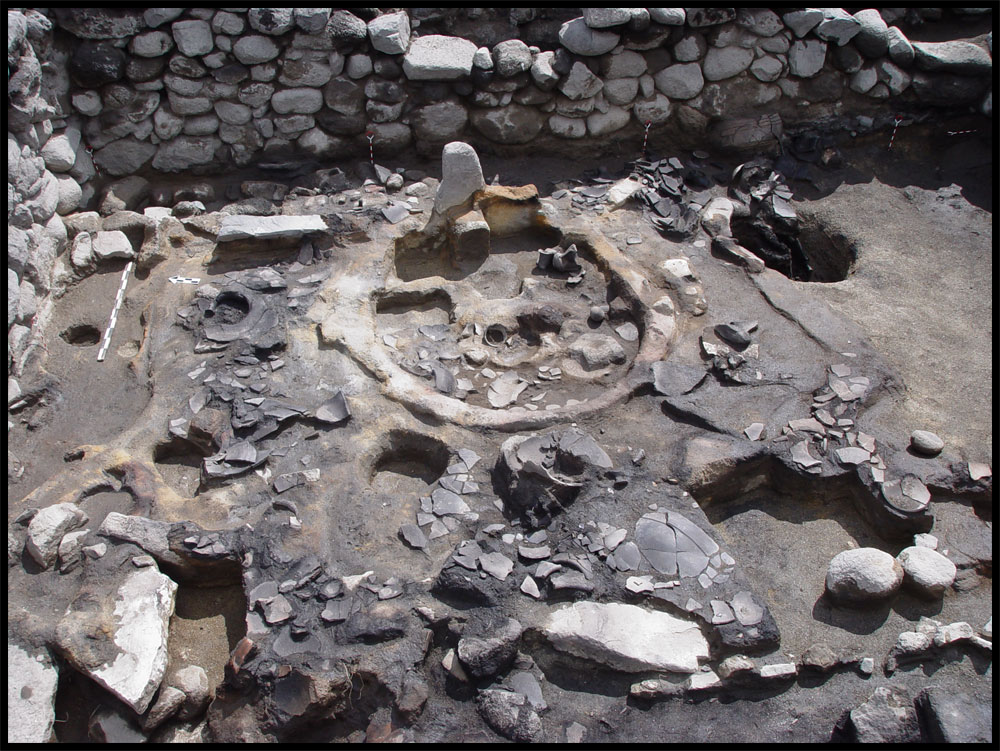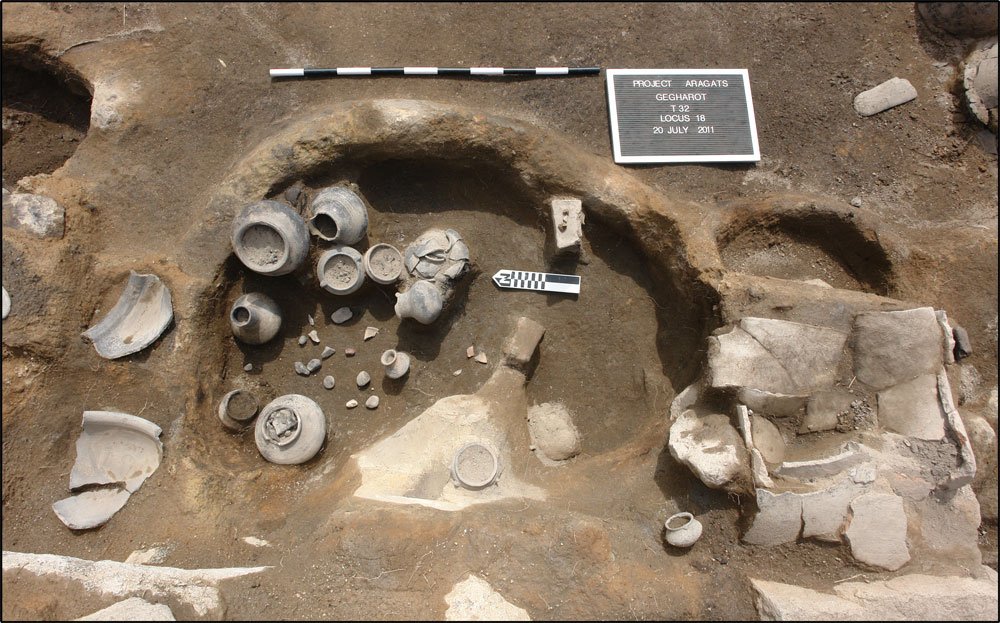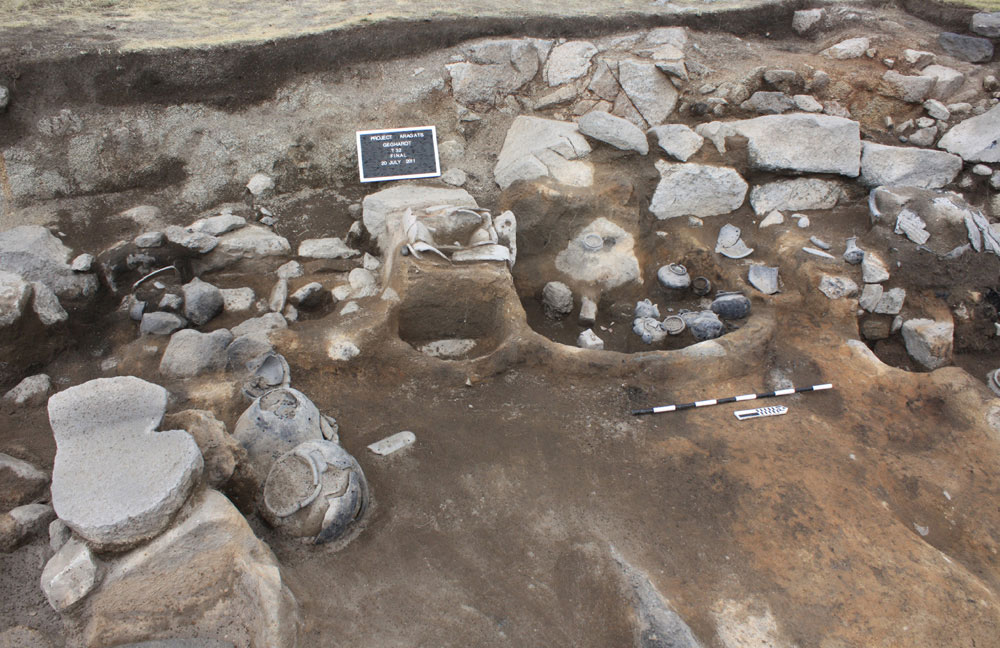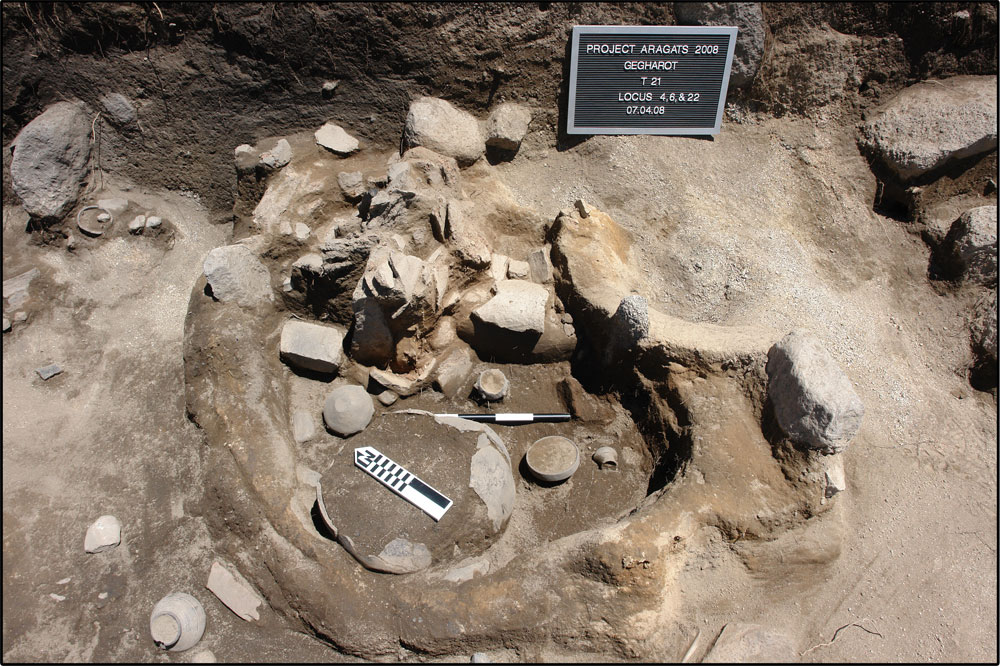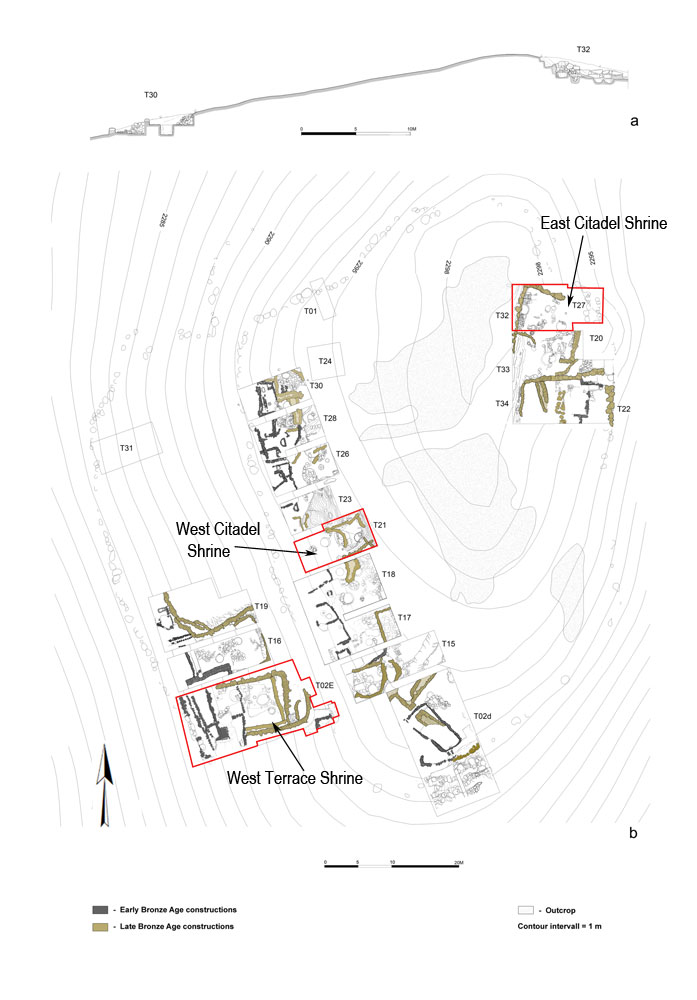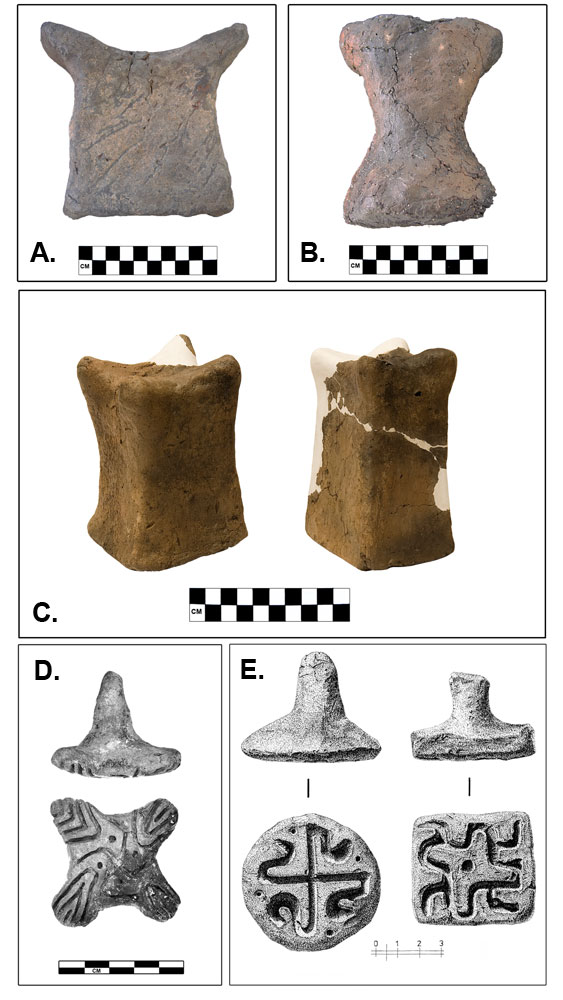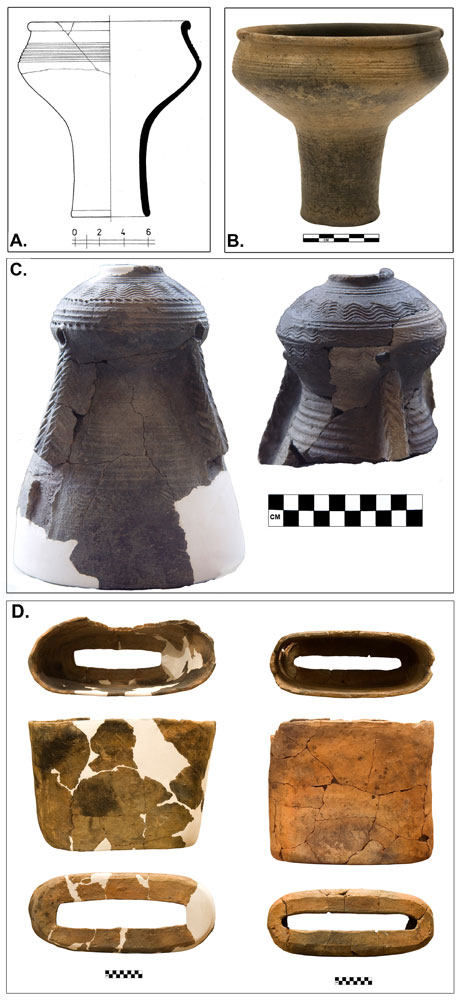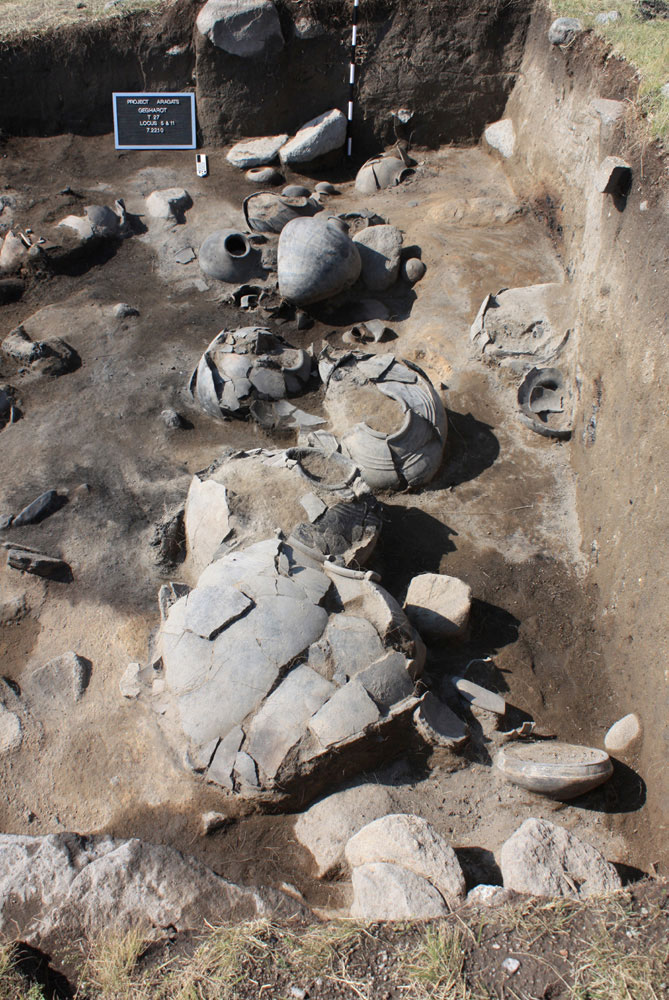Photos: 3,300-Year-Old Shrines Uncovered
Three ancient shrines where rulers may have practiced divination thousands of years ago in what is now Gegharot in Armenia have been discovered. The shrines were found within a hilltop fortress, which would've been destroyed right before the site was abandoned. Here's a look at the shrines and excavation at the site, with the images courtesy Professor Adam Smith. [Read the full story on the Gegharot discovery]
Looking ahead
Three shrines, dating back about 3,300 years, have been unearthed within a hilltop fortress at Gegharot in Armenia. Archaeologists believe rulers would have used the shrines for divination — a practice in which one tries to see into the future. This image shows a shrine excavated on the fortress' west terrace. The stone stele seen in the center of this image would likely have been a focal point for rituals carried out at this shrine researchers believe.
At the east
The altar and basin of a shrine excavated on the fortress' east citadel is seen here.
Evidence of sacrifice
The basin of the east citadel shrine is seen in this image. In the three shrines archaeologists found evidence that animal bones, stone and flour were used in different rituals aimed at trying to predict the future.
Get the world’s most fascinating discoveries delivered straight to your inbox.
Grinding for prophecy
The basin (to the right of the east citadel) and an installation that was used for grinding (to the left) are shown here at the Gegharot site. The people who lived there may have used the grinding installation to produce flour that could have been used in aleuromancy, a process by which flour is used to predict the future.
At the west
The basin of the west citadel shrine is seen here. Excavations at the shrines was conducted by the American-Armenian Project for the Archaeology and Geography of Ancient Transcaucasian Societies (Project ArAGATS). The west terrace shrine was excavated in 2003, the west citadel shrine in 2008 and the east citadel shrine was excavated in 2010 and 2011. The researchers reported their findings recently in the American Journal of Archaeology.
Working, not living
The three shrines were found close together at Gegharot. Workshops dedicated to metal, bone and stone tool production were also found at the site, as were storage areas. The fortress contained no areas that could readily be identified as domestic dwellings.
Unique finds
A number of interesting artifacts were discovered in the Gegharot shrines. Figures A, B & C, in this image, show clay idols with hornlike protrusions. Figures D and E show stamp seals that could have been used to stamp images on pieces of dough before they were used for divination.
Intriguing pieces
Archaeologists found two funnels (Figures A & B) and two censers (Figure C) that were used to burn substances at the shrine site. Manghals, a curious type of artifact whose purpose is uncertain, were also discovered there. The manghals are open at one end and have a slit on the other.
A collection of items
Here, a storage area in the east citadel shrine. Many other artifacts were found in these shrines, including a wide mix of pottery and animal bones with marks on them.
The site as a whole
A map showing Gegharot's location along with nearby fortresses and other sites located in the broader region. Archaeologists believe that Gegharot was part of a small polity that controlled a number of fortresses in modern-day Armenia.
Follow Live Science @livescience, Facebook & Google+.

Owen Jarus is a regular contributor to Live Science who writes about archaeology and humans' past. He has also written for The Independent (UK), The Canadian Press (CP) and The Associated Press (AP), among others. Owen has a bachelor of arts degree from the University of Toronto and a journalism degree from Ryerson University.


